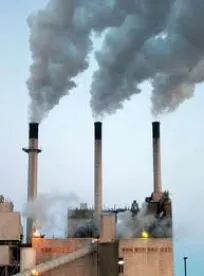In its latest effort targeting emissions from the oil and gas industry, EPA last week released final Control Techniques Guidelines (CTGs) for reducing volatile organic compound (VOC) emissions from existing oil and natural gas equipment and processes (Oil and Gas CTG). The CTGs represent EPA’s Reasonably Available Control Technology (RACT) recommendations for reducing VOC emissions from existing sources in the oil and gas industry. While EPA may characterize the CTGs as voluntary guidelines, they are anything but voluntary. On October 26, 2015, EPA issued a new stringent National Ambient Air Quality Standards (NAAQS) for ozone. For the most part, the CTGs specified in this proposal will be required in those areas of the country that are designated as nonattainment with the new ozone NAAQS. States are required to impose the CTGs in areas classified as “Moderate” or above nonattainment as RACT or face an uphill battle to make their own determination as to what constitutes RACT for VOC emissions from existing oil and gas sources.
Currently, 21 areas throughout the United States are classified as “Moderate” and above the 2008 ozone standards and are therefore required to implement RACT. However, this fall EPA is expected to designate new nonattainment areas based on the 2015 Ozone Standards, which ratcheted the ozone levels down from 0.075 to 0.070 parts per million (ppm). States with areas in nonattainment will be required to make RACT determinations for oil and gas sources in those areas. Once EPA finalizes the Oil and Gas CTG and publishes the rule in the Federal Register, states are required to make RACT determinations and update their SIPs within two years.
Background
The Clean Air Act requires that states in nonattainment for ozone must revise their SIPs to include RACT for sources covered by a CTG. This Oil and Gas CTG provides recommendations as to what EPA considers RACT; however, states are free to make their own determination as to what RACT for VOC emissions is for existing oil and gas sources. EPA last published a CTG for the oil and gas industry in 1984.[1] In developing this CTG, EPA considered information obtained via several information collection requests (ICRs), existing state regulations applicable to oil and gas storage vessels, state permitting programs targeting VOC emissions in the oil and gas sector, and local permitting programs as well. Additionally, EPA considered comments received on its Oil and Gas Emission White Papers and technical support documents supporting the rollout of NSPS OOOO. EPA has included in this latest release a model rule detailing the regulatory language states can use to integrate the CTG requirements into their State Implementation Plan (SIP).
CTG Controls
The sources that are the subject of the Oil and Gas CTG include storage vessels, pneumatic controllers, pneumatic pumps, centrifugal and reciprocating compressors, equipment leaks and fugitive emissions. The CTG does not cover emissions associated with completions at hydraulically fractured oil and gas wells. While EPA is excluding certain equipment, EPA’s recommended RACT would apply as follows:
|
Oil and Gas Emission Source |
EPA RACT Recommendation |
|
Storage Vessels - Individual storage vessel with a potential toemit (PTE) greater than or equal to 6 tpy VOC. |
95 percent reduction of VOC emissions from storage vessels. OR Maintain less than 4 tpy uncontrolled actual VOC emissions after having demonstrated that the uncontrolled actual VOC emissions have remained less than 4 tpy, as determined monthly, for 12 consecutive months. |
|
Pneumatic Controller- located at a natural gas processing plant. |
Natural gas bleed rate of 0 scfh (unless there are functional needs including, but not limited to, response time, safety and positive actuation, requiring a bleed rate greater than 0 scfh). |
|
Pneumatic Controller - located from the wellhead to the natural gas processing plant or point of custody transfer to an oil pipeline. |
Natural gas bleed rate less than or equal to 6 scfh (unless there are functional needs including, but not limited to, response time, safety and positive actuation, requiring a bleed rate greater than 6 scfh). |
|
Pneumatic Pumps – located at a natural gas processing plant. |
Zero VOC emissions. |
|
Pneumatic Pumps – located at a well site. |
|
|
Individual reciprocating compressor located between the wellhead and point of custody transfer to the natural gas transmission and storage segment. |
Reduce VOC emissions by replacing reciprocating compressor rod packing on or before 26,000 hours of operation or 36 months since the most recent rod packing replacement. Alternatively, route rod packing emissions to a process through a closed vent system under negative pressure. |
|
Individual centrifugal compressor using wet seals that is located between the wellhead and point of custody transfer to the natural gas transmission and storage segment. |
Reduce VOC emissions from each centrifugal compressor wet seal fluid gassing system by 95 percent. |
|
Equipment components in VOC service located at a natural gas processing plant. |
Implement the 40 CFR part 60, subpart VVa leak detection and repair (LDAR) program for natural gas processing plants. |
|
Individual well site with wells with a gas to oil ratio (GOR) greater than or equal to 300, that produce, on average, greater than 15 barrel equivalents per well per day. |
Develop and implement a semiannual optical gas imaging (OGI) monitoring and repair plan that covers the collection of fugitive emissions components at well sites within a company defined area. Method 21 can be used as an alternative to OGI at a 500 ppm repair threshold level. |
|
Individual gathering and boosting station located from the wellhead to the point 11f custody transfer to the natural gas transmission and storage segment or point of custody transfer to an oil pipeline. |
Develop and implement a quarterly OGI monitoring and repair plan that covers the collection of fugitive emissions components at gathering and boosting stations within a company defined area. Method 21 can be used as an alternative to OGI at a 500 ppm repair threshold. |
EPA is on a mission to retro-fit existing oil and gas infrastructure with new state-of-the-art control technologies. This rule is a key component of that effort and is also an instrumental part of EPA’s climate change agenda. After all, these same control techniques will also substantially reduce methane emissions (a potent greenhouse gas) from existing oil and gas sources. As a final thought, this rule serves as a preview of what EPA is expected to require in the pending New Source Performance Standards addressing methane emissions at existing oil and gas facilities.
[1] See 49 Fed. Reg. 4432 (Feb. 6, 1984).



 />i
/>i

